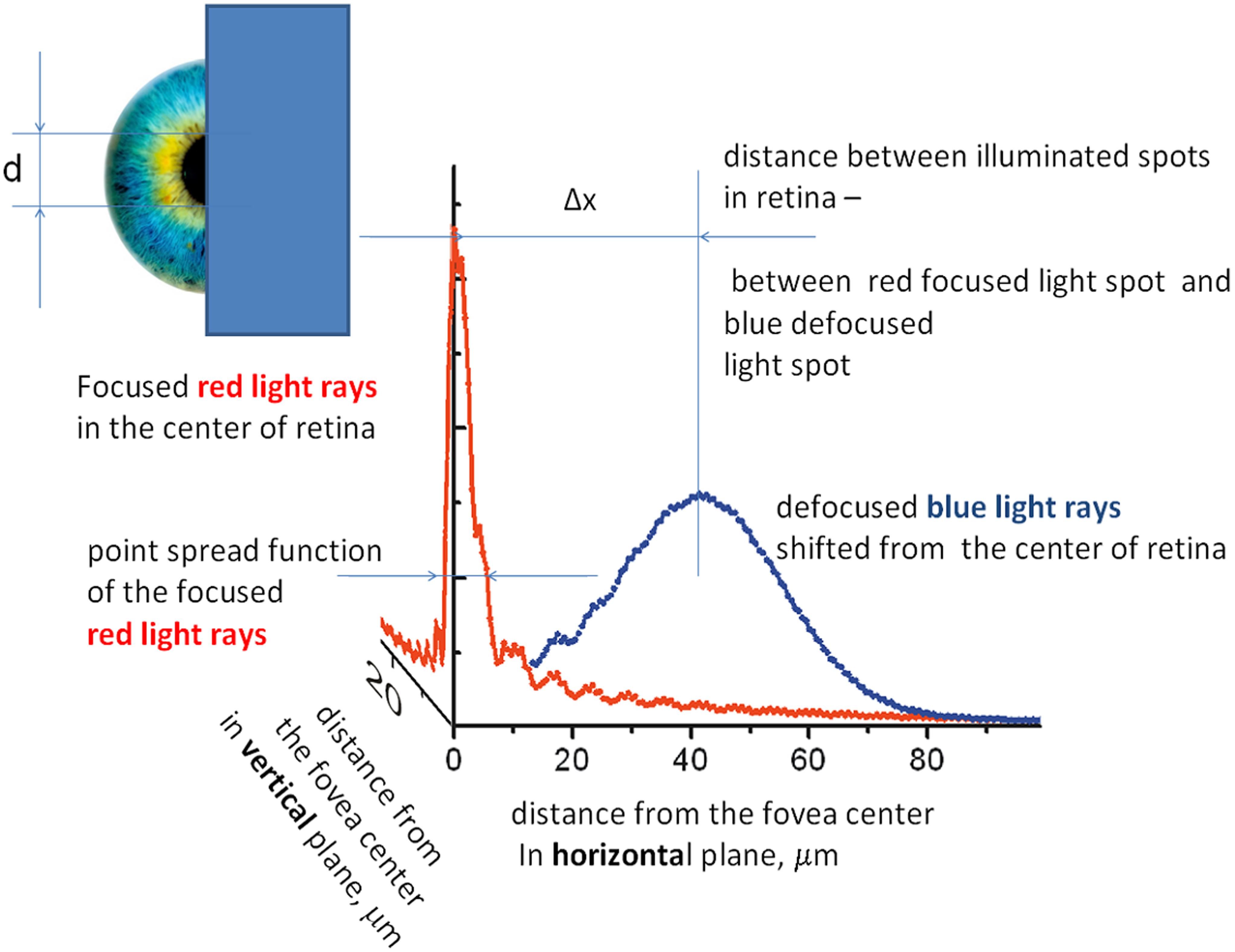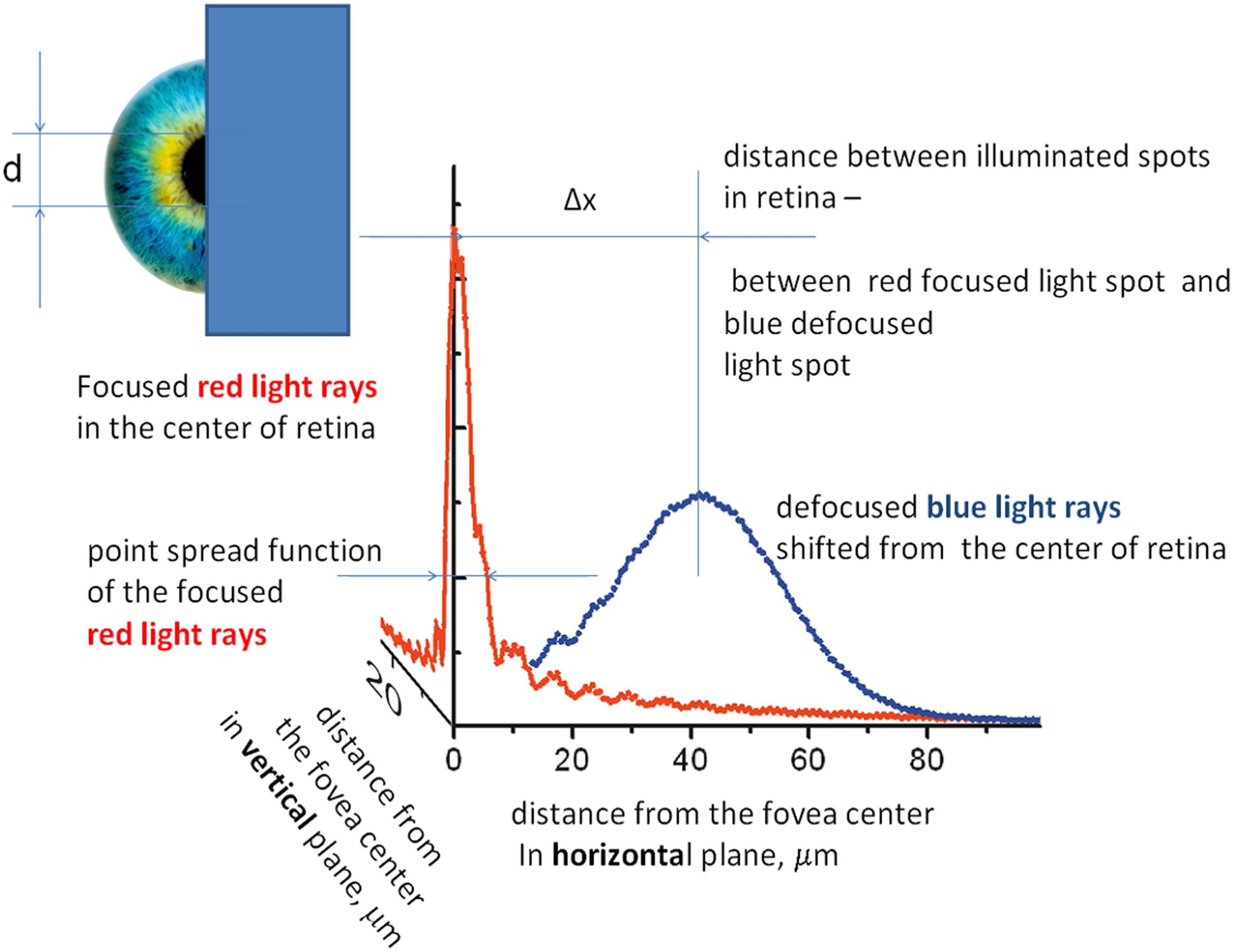
Sure! Here’s a rewritten version of the article based on the material you provided:
—
# Chromostereopsis: A Vivid Depth Illusion That Differs for Everyone
Initially, it might just appear to be a straightforward image: a blue iris placed within a red eye. You may think, “What’s the fuss?” However, upon examining it closely—or better yet, by opening both eyes wide—you may encounter something remarkably peculiar: a striking illusion of depth where none is present.
For many viewers, the blue and red sections of the image do not merely look like colors on a flat plane. Instead, they give the impression of existing at various depths, as if they are floating distinctively in space. Techniques like rapidly blinking, adjusting the screen brightness, or relaxing in a dim room can enhance the effect, allowing the two colors to appear to drift independently as you shift your head. This captivating phenomenon is referred to as **chromostereopsis**.
## What Is Chromostereopsis?
Chromostereopsis, which translates to “color-depth vision,” is a visual illusion in which different colors seem positioned at different depths, despite being on a single flat surface. This illusion is particularly intensified with specific color pairs—especially red and blue—and can vary greatly among different observers.
Remarkably, chromostereopsis is a genuine stereo illusion: it necessitates the brain to synthesize slightly different information from both eyes to generate the depth effect. Closing one eye diminishes the illusion altogether. This stereo requirement distinctly sets it apart from numerous other depth illusions that still function with one eye closed.
## Perception Varies Among Individuals
Interestingly, not everyone perceives chromostereopsis in the same manner. While many individuals view the red color as nearer and the blue as further away, others may experience the reverse. In fact, a portion of observers might report no notable depth illusion whatsoever. These variances in perception add a layer of intrigue to this already captivating phenomenon.
Adding further complexity, individuals who are **stereoblind**—unable to merge inputs from both eyes into a cohesive 3D image—do not perceive this illusion at all. Many stereoblind people may not even recognize their condition, and professions requiring acute depth perception, such as surgery or juggling, often disclose such differences.
## How Does It Function?
The mechanisms behind chromostereopsis are intricate and not completely comprehended. However, experts propose several contributing factors:
– **Chromatic Aberration**: Red and blue light possess varying wavelengths. As they enter the eye at slightly different angles, they focus at distinct points on the retina, generating a disparity that the brain interprets as depth.
– **Optical Centering and Eye Asymmetry**: Minor variations in how light reaches the two eyes (due to asymmetries like foveal displacement) may influence the perception of depth between colors.
– **Brightness and Luminance**: The comparative brightness of the red and blue regions, along with the background, can amplify or diminish the illusion.
Interestingly, some individuals discover that their glasses enhance chromostereopsis, likely because corrective lenses can accentuate the chromatic differences between the eyes.
## A Look into Art and Culture
Though frequently encountered in experiments and optical illusions, chromostereopsis also emerges naturally in art and design.
Take, for instance, the vivid stained-glass windows of medieval churches, where lively reds adjacent to deep blues may have produced depth effects for historical viewers. Contemporary instances include video games, pop art, and even the set design of the BBC comedy panel show _Have I Got News For You_, where contrasting colors appear to leap off the background.
Numerous artists, consciously or unconsciously, utilize chromostereopsis to inject a dynamic, three-dimensional quality into their artwork, without the need for specialized glasses or complex equipment.
## Final Thoughts
Chromostereopsis serves as a powerful reminder of the subjectivity of our visual perceptions. What might seem flat to one individual could appear strikingly three-dimensional to another. The phenomenon can be influenced by personal factors such as eye structure, visual sharpness, and even lighting conditions.
In a world where we often presume that everyone perceives reality similarly, phenomena like chromostereopsis prompt us to ask: How much of the “reality” we witness is actually constructed in our minds?
For additional insights on depth illusions and visual tricks, explore the _Mind Hacks_ book or delve into the scientific literature, such as Akiyoshi Kitaoka’s contributions in the _Encyclopedia of Color Science and Technology_.
—
Would you like me to provide a shorter version of this article for quick reference or a social media post?
